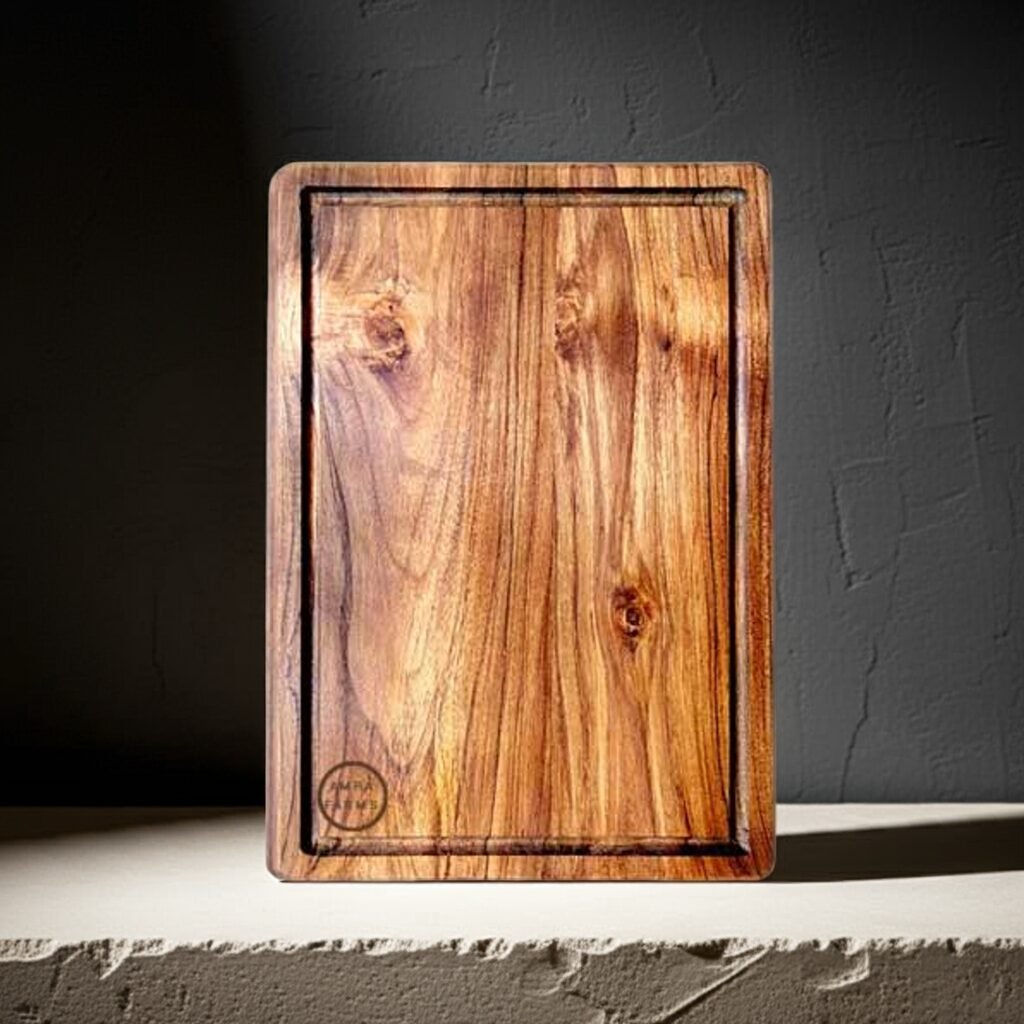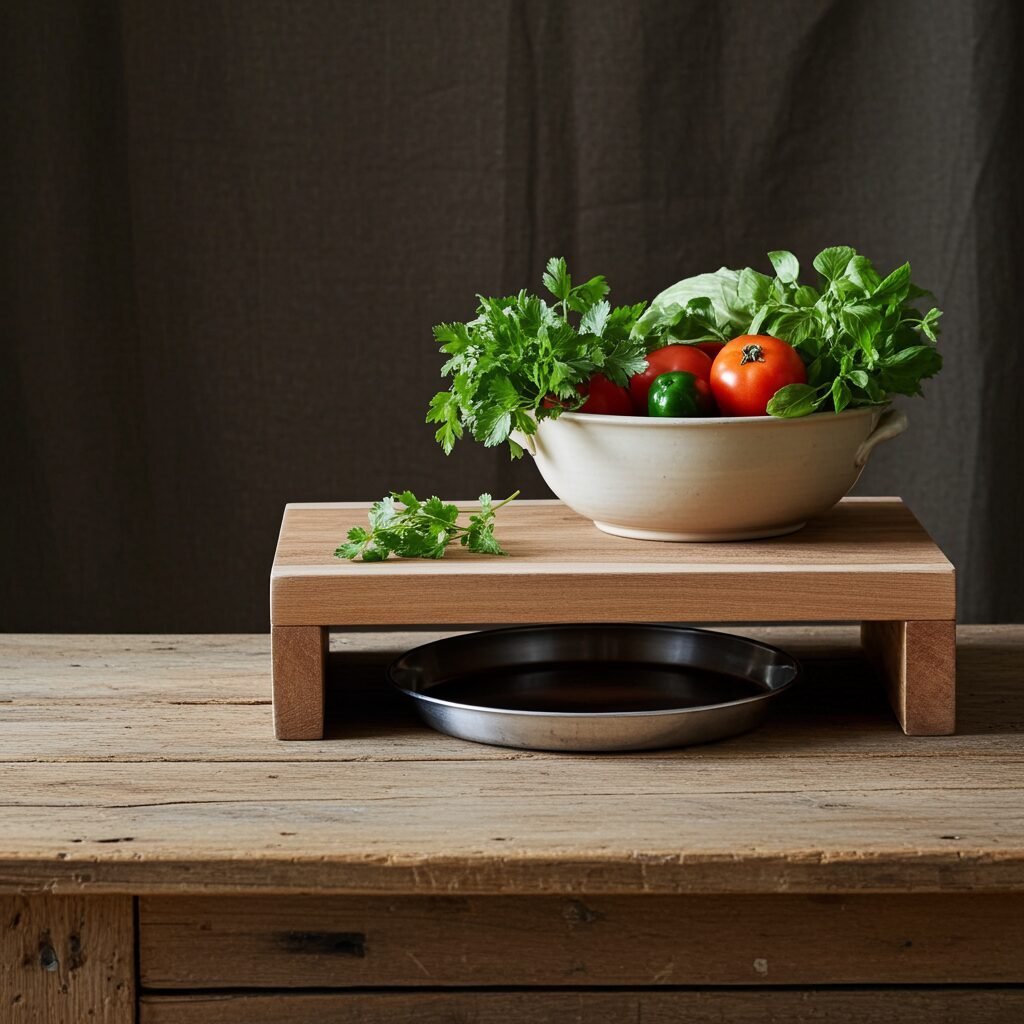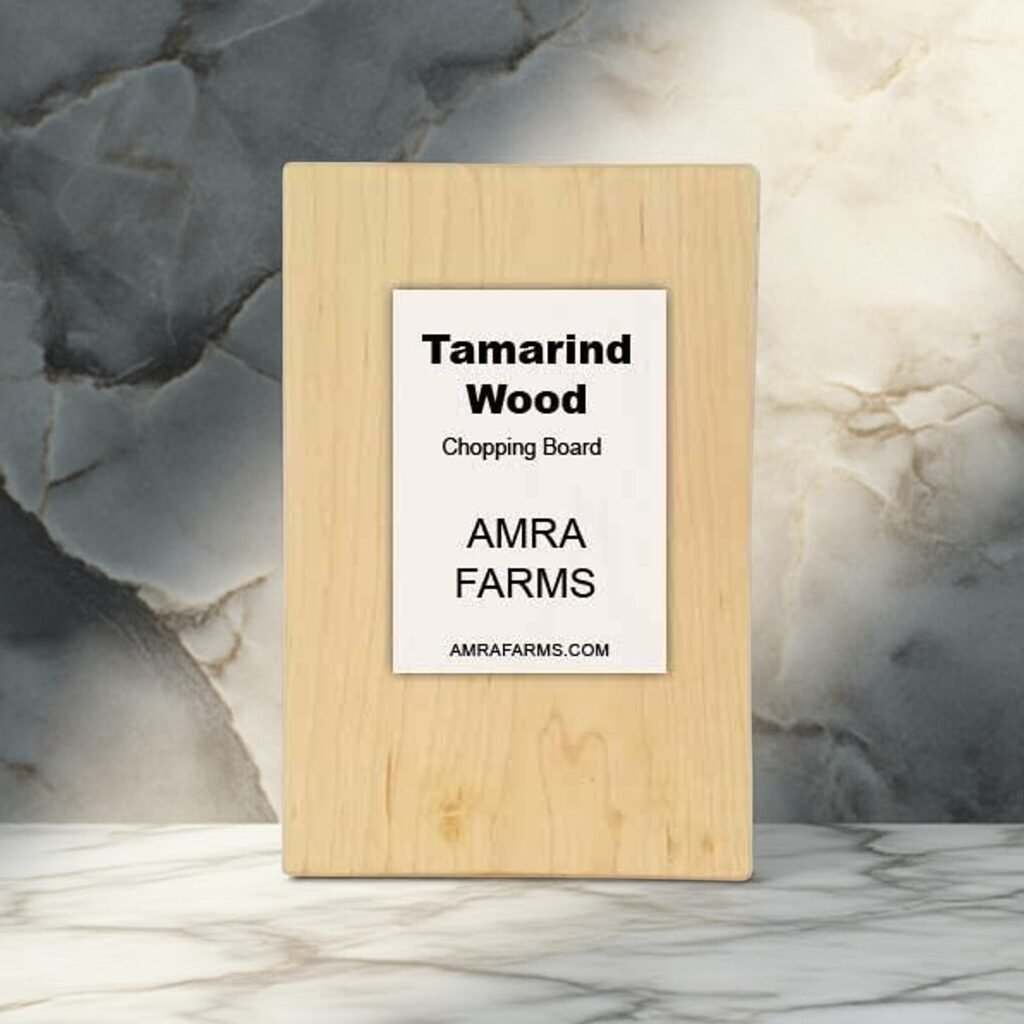Your cart is currently empty!
Mango Wood Furniture Pros & Cons : Pros and Cons of Mango Wood Chopping Boards
Mango wood chopping boards are becoming an increasingly popular option for cutting boards with their availability and sustainable nature. Mango wood has a unique appearance, grunge, rustic look and can add a unique aesthetic to your kitchen. But is mango wood right for you? What are its benefits, and what are its flaws?






Mango wood comes from the mango tree (obviously), grown for its fruit. A tropical tree abundant in India, mango trees have a life of more than 100 years and have been known to live for up to 300 years in some cases. Unfortunately, mango trees stop producing fruit after a few years. Some trees fruit till they are 40, while others fruit till 100. But when the trees stop fruiting, farmers usually replant new trees and cut down the mature ones. Mango wood in India is used predominantly in the construction industry for its strength but was not preferred for furniture and accessories. Mango wood is known for its beautiful grains that evolve over time as it ages.
Being a fast-growing and renewable resource, mango wood is becoming popular for furniture, kitchen accessories, and especially cutting boards. Being knife-friendly, durable, and easy to maintain, mango wood offers several advantages and drawbacks.
Pros of Mango Wood for Chopping Boards
Sustainability & Eco-Friendliness: Sustainability is a key feature of mango wood. Mango wood takes a few years to mature. Unlike teak and other hardwoods, which take 60, 80, and 100 years to mature, mango wood is available to harvest once the trees stop producing fruit, usually between 30 and 60 years. The wood from the trees that are cut is used as a byproduct to reduce waste and promote eco-friendly practices. Choosing a mango wood chopping board helps support sustainable forestry and minimizes environmental impact.
Durability & Strength: Mango wood provides a hard surface to chop vegetables and meat on but is soft on your knives. Your knives will be sharper and will not dull as easily on a mango wood chopping board, but your board itself will not crack or split like other softwoods. Mango wood is considered hardwood and is used in outdoor furniture in many countries, including the USA. Though not popular in India, mango wood is soon gaining popularity. The key to choosing the right mango wood for durability depends on the age of the wood. Aged wood is known to be more durable and dense compared to younger ones.
Aesthetic Appeal: Mango wood has a rustic look and ages well to a dark brown with unique patterns. The unique patterns, warm golden brown hues with dark streaks appear on hardwood over the course of time. While the board itself may look blank and white, the use of mango wood with acidic food will enhance the color of the wood gradually. Many vendors use vinegar to enhance the color of the wood to a dark shade. The rustic, elegant look of the mango wood boards makes it both functional and a decorative piece in your kitchen.
Water-Resistance & Maintenance: Mango wood is naturally resistant to water absorption to a degree. Soaking the board in water is not recommended. With regular oiling and avoiding prolonged exposure to water, your boards will remain in excellent condition for years. Relatively easy to maintain, mango wood is a hassle-free option for home cooks.
Affordable Alternative: Being a renewable resource and sustainable wood, mango wood chopping boards are often much more affordable than other wooden varieties like teak, mahogany, and even acacia while offering similar quality, durability, and aesthetic appeal. Mango wood chopping boards are an excellent product that offers great value for money without breaking the bank.
Cons of Mango Wood for Chopping Boards
Prone to Scratches & Dents: Mango wood has a Janka rating of 1000 and is considered hardwood. Though mango wood is durable, it is softer than traditional hardwoods like oak and teak. Repeated use will cause knife marks, scratches, and dents on the surface. If you are looking for a chopping board that will last years and even decades, the mango wood chopping board is not the best option, and we recommend a teak wood chopping board instead. However, regular oiling can help minimize wear and tear, and an annual refurbishing will make your board as good as new.
Moisture Sensitivity: Mango wood is a tropical product and is water-resistant to some extent. Though mango wood is water-resistant, it does not go well when drowned in water for an extended period. Being a lighter wood, absorption of water for a prolonged period and rapid drying will cause the wood to warp unless it is thick enough. Amra Farms chopping boards are made to prevent warping with a 1.25-inch profile. But even with the thickness, it is recommended that you keep your boards dry.
Needs Proper Seasoning and Finishing Before Use: Mango wood requires proper seasoning and shade drying before use. Mango wood has high water content when cut. Drying in the sun will cause the wood to split. All chopping boards need to go through a seasoning and curing phase in the shade to ensure the moisture is removed from the wood naturally. The wood is often seasoned with coconut oil to enhance its oil content and ensure the wood does not absorb moisture.
Limited Availability in Some Regions: Mango wood is a tropical plant and is not available in many parts of the country. This makes its availability limited. Though the wood is affordable, local consumption in the construction industry also makes the wood hard to find in many states, often driving the price slightly higher than normal.
Final Verdict
Is Mango Wood a Good Choice? Mango wood is a great option for home cooks looking for an affordable wooden board. The trick is to find a single-block mango wood chopping board. Mango wood has its own set of pros and cons, but it is a good chopping board if you can take the time to maintain it. A weekly routine of oiling the board can ensure a longer life for your board. The board is durable and adds rustic beauty to your kitchen. Just remember to keep the board dry.
Categories
Products
- Buy Wooden Vegetable Cutting Boards Online
- Wooden Kitchen Accessories Tools
- Buy Butcher Block & Meat Cutting Boards Online
- Buy Premium Edge Grain Single Block Wooden Chopping Boards Online
- Buy The Best Teak Wood Chopping Boards Online In India
- Buy Wooden Cutting Boards With Handle For Kitchen
- Mango Wood Chopping Boards
- Tamarind Wood Chopping Boards
- Wooden Platter Boards , Pizza Platters & Charcuterie Boards
Tamarind Wood Cutting Board Teak Wood Cutting board
Recent Posts
- Unique Wooden Chopping Boards with Medicinal Benefits
- Exotic Woods of India and Its Uses
- Best Uses of Teak Wood: Common and Unique Applications That Make It the King of Hardwoods
- What to look for when purchasing a teak wood cutting board and how to identify teak wood
- Wooden chopping boards that naturally resist fungus/mould growth
